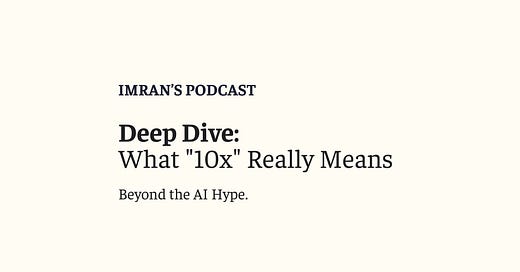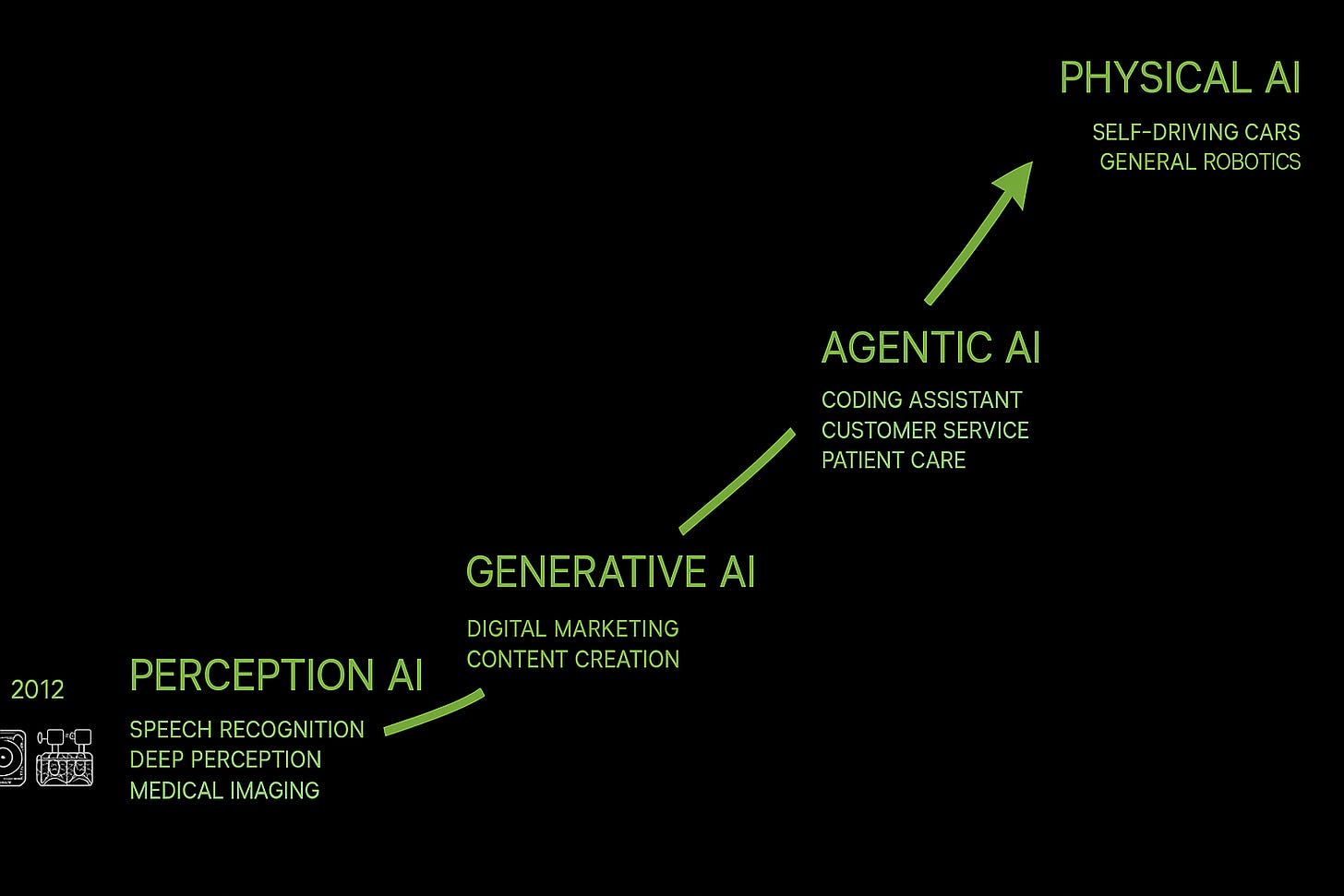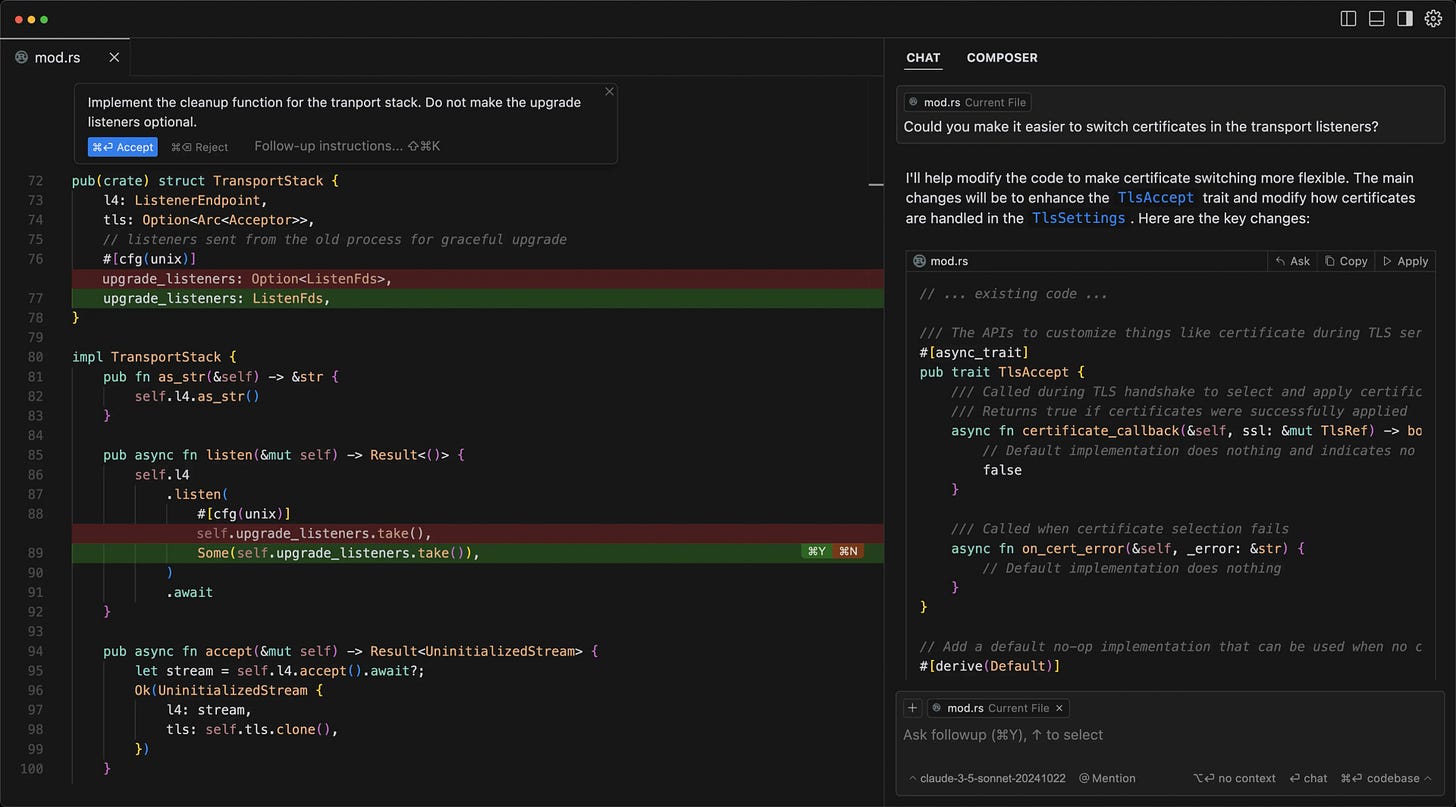The fast-changing AI domain has made "10x" both a promotional catchphrase and a realistic target. What does it really mean to achieve tenfold productivity or capability growth in 2025? The definition of "10x" has expanded from basic speed metrics to include human-machine collaboration as AI tools advance in sophistication.
The AI Leverage Evolution
A genuine 10x AI tool in 2025 delivers more than speed improvements because it creates new approaches to problem-solving. The era of treating AI as a speedier calculator or search engine has passed into history. Modern intellectual partner AI systems go beyond task execution to completely transform how tasks should be performed.
Speed: From Minutes to Moments
The most obvious aspect of 10x is its sheer rapidity. Assignments that previously took eons to accomplish; hunting down a subject, composing a written work, crunching numbers, or crafting software.
This can now be done in the blink of an eye. But when taken alone, speed doesn't really convey the magnitude of change that AI tools seem poised to bring to workplaces in 2025.
Depth: Nuance and Complexity
Depth is what lies beyond speed—the capacity to manage nuance and complexity that could easily swamp even proficient humans. Today's AI pals can chew on thousands of factors all at once, pick out slight signals among tremendous amounts of data, and keep the thread of their argument straight across documents in a way that would be impossible for any human team to sustain for even a few days. And most obviously, this depth enables insights that might not otherwise come to light.
Automation: From Thought to Completion
One of the most revolutionary aspects of 10x tools in 2025 is their capacity to connect thought and execution. The most advanced systems don't just answer prompts anymore—they take a half-baked idea and turn it into a polished product, handling all the intermediate steps between the two with almost no help from humans.
Insight: Seeing What We Miss
Tools that are really 10x better than anything else add to human creativity and problem-solving by showing us the connections and possibilities that we might otherwise miss. They are not super-intelligent machines that do our work for us. They are not even super-smart tools that we use in the same old ways and get the same old results. They are very much the opposite: extensions of our own limited intelligence that serve to magnify and multiply our force
Creativity: Beyond Imitation
By 2025, the most powerful AI tools have advanced beyond simple imitation and can act as truly creative partners. They do more than just replicate current patterns; they work with us to generate genuinely new ideas, designs, and solutions that go well beyond the usual framework. This is convention-defying stuff.
The Real Measure of 10x
A 10x tool's real worth isn't revealed through benchmark scores or technical specs. Its worth emerges in the world and in the hands of users—who, by the way, are the only true judges of a tool's value. We measure it through real-life impact, and we start with how it enables individuals and teams to accomplish results:
Does it allow a solo founder to go up against teams ten times their size and hold up a good fight?
Does it push a researcher to explore ten times more wild hypotheses within the same amount of time?
Does it empower a product designer to go through ten times more iterations, build working prototypes and hit their result?
Does it give a content creator, well, ten times more oomph to create with? (We suspect this is a yes for the same reasons, with the caveat that a content creator could just as easily be a facilitator of terrible outcomes as good ones.)
Use Case Deep Dives
This section is a detailed look at how the main tools and services based on artificial intelligence work and what kind of performance they deliver. When using these tools and services, you get the best results when you know what you want and can clearly describe it. Some tools shine in areas where others may not. We'll also touch on the subject of using specialized tools versus using more universal, general-purpose tools.
Research and Knowledge Work
What: Sifting through massive datasets, documents, and academic sources to uncover insights.
Why it matters: Time-intensive and cognitively demanding, great research is a leverage multiplier.
Top Tools: Claude for reasoning and context; DeepSeek for cost-effective technical research; GPT-4o for multimodal analysis.
Takeaway: Claude is best for narrative and logic-heavy research; DeepSeek shines on math/science benchmarks; GPT-4o is ideal when your inputs are varied (text + visuals).
Coding and Development
What: At scale, writing, debugging, and maintaining software.
Why it matters: AI that can read, reason, and write code is already saving time in developer workflows.
Top Tools: For all GitHub automation, use Claude; for algorithmically difficult problems, use DeepSeek; for transforming and generating code (e.g., from a natural or higher-level specification), use Gemini.
Takeaway: Claude is dev-ready, DeepSeek is powerful and cheap, Gemini is built for scale and multimodal interaction.
Content Creation and Communication
What: Penning various forms of written communication—blogs, emails, presentations, scripts—and nailing the brand's tone across all.
Why it matters: Writing isn't just about churning out words. It's about making those words resonate and be understood quickly.
Top Tools: GPT-4o for hitting all the mediums and for sheer versatility; Claude for making long, coherent pieces of writing; Gemini for the more visually-inclined.
Takeaways: If you're looking for an all-around tool, go with GPT-4o. If your tool needs a toehold in long-form writing, go with Claude.
Automation and Task Execution
What: Delegating not just tasks but full workflows to AI.
Why it matters: Productivity isn’t just faster clicks—it’s making your own self less necessary in the loop.
Top Tools: Manus for end-to-end task execution; Claude (via Claude Code) for dev workflows; DeepSeek for math/data automation.
Takeaway: Manus is the only true autonomous agent right now; Claude excels within dev pipelines; DeepSeek wins on cost-efficiency.
Business Intelligence and Decision Support
What: Making better calls from analyzing data, trends, and signals.
Why it matters: The competitive advantage is in the speed and sharpness of decisions.
Top Tools: Use Claude for cross-functional business logic; Manus for real-time research; and Gemini for deep-diving in Google-native environments.
Takeaway: Claude is great for the types of complex scenarios that require business logic and reasoning; Manus gets you to fast insights in real time; and Gemini ties together the visual and structured data for deeper understanding.
Startup Operations and Product Development
What: Market research, design, building, and GTM in a lean team.
Why it matters: Startups can't afford siloed tools or stacks that are too fat.
Top Tools: GPT-4o for all-end flexibility; Manus for operational scaling; DeepSeek for building cheap.
Takeaway: GPT-4o is the Swiss Army knife; Manus gives the founders time back; DeepSeek is basically golden.
AI Tool Recommendation Matrix
We will break down how each leading AI tool performs across a set of important categories for founders, operators, researchers, and creators.
We will not treat these tools as interchangeable, and we will not treat them as a monolithic set of things that do the same kind of work in the same kind of ways.
Instead, we will look at where each tool really stands out and where it makes sense to use it.
Your 10x Tool: Decision Framework
When selecting which AI tool will provide the most leverage for your specific needs, consider these key factors:
When it comes to simple, well-defined tasks, specialized tools usually do a better job than all-purpose ones. But if you have a complex workflow that demands a variety of capabilities, you're better off with a versatile tool like GPT-4o or Claude 3.7 Sonnet.
For large documents or codebases, use tools with the largest context windows—such as Claude, with its 200,000-token context; Gemini; or Grok.
For teams with limited financial resources, DeepSeek R1 provides tremendous value at a price point far below that of its competitors. The trade-off is that its user interface and creative functionalities are a few steps lower on the proficiency scale.
If you need a tool that can perform tasks with little supervision, Manus has what it takes to ensure that operation remains largely autonomous. It is, however, an expensive option.
To meet the integration needs, consider where the tool lands in your tech stack and workflow. Gemini offers smooth integration with all things Google, while Claude's GitHub integrations are leaps and bounds ahead of the rest.
Often the most powerful approach is combining tools—using DeepSeek R1 for research and data analysis, using Claude for deep reasoning, and using GPT-4o for multimodal tasks and content creation, for instance.
The Future of AI-Augmented Work
What is clear, however, is that we have entered a new era of AI-enhanced work. The pioneer models of 2025 are not merely improvements on their predecessors, they're a fundamental shift in how we handle inherently difficult cognitive tasks. And when I say they're a shift, I mean they're faster and better; they're also different.
The most successful professionals in 2025 won't be those who just adopt AI tools as swifter versions of existing workflows. They'll be the ones who rethink their processes from square one, using AI's one-of-a-kind capabilities to solve problems that would have stumped them before.
Whether you're a solo founder constructing a venture with AI as your partner, an investigator probing profound questions at an unprecedented scale, or a maker of content who in the past would have required a platoon to pull it all together, the correct AI tools can indeed give you 10x leverage—if not more—in not just the swiftness with which you accomplish tasks, but in their profundity, quality, and actualization.














